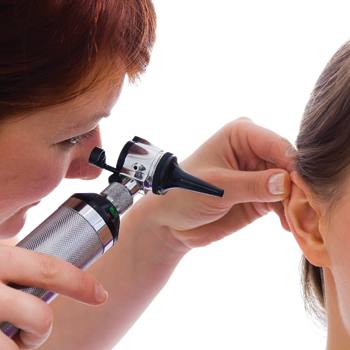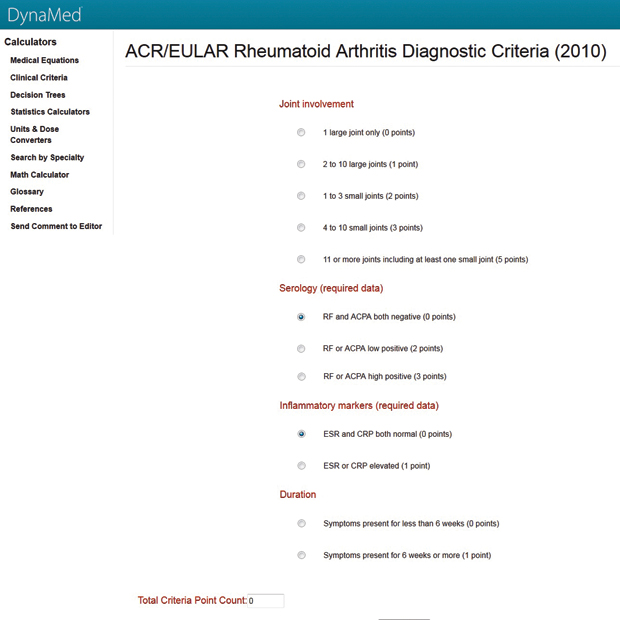Adapting primary care to include transgender patients
The best way to treat transgender individuals in the ambulatory care setting involves coordination headed by culturally competent primary care.
In order to get blood drawn, Julie Winters once had to dress up like a man.
She could tell when she called to make the appointment. At the office, the front desk personnel called her by the name she received at birth: Jason. The staff did not know that she was transgender.
“I knew they were going to call one name and not my name,” she recalled. “I didn't want to feel forced to dress like a man.”

Ms. Winters is a transgender woman who, at the time, hadn't legally changed her name. Her experience illustrates the kind of treatment that many transgender patients have come to expect from the health care system.
It's not the dramatic, bald-faced prejudice of a cable television movie, although that can still happen, too. But it nevertheless serves to alienate a growing population from a vital—and ostensibly nonjudgmental—system.
“Just finding a doctor can be extremely difficult,” said Ms. Winters, who works in information technology at the Mayo Clinic in Minnesota. “Finding someone who's accepting of your transition, where you can disclose your conditions. You may feel like you need to hide things from doctors.”
A report released in 2016 by the Williams Institute, a gender and sexuality think tank at the University of California, Los Angeles, School of Law, estimated that 1.4 million Americans, or 0.6% of the population, identify as transgender, which is generally defined as being born with typical male or female anatomy but identifying as a member of the opposite gender. That estimate is approximately double those of previous studies and may itself be low, as there is no consistent means of quantifying or tracking this population on a national scale.
According to the U.S. Transgender Survey, last conducted in 2015 by the National Center for Transgender Equality, 33% of transgender individuals had at least one negative health care experience related to being transgender, such as verbal harassment or being refused treatment because of their gender identity. Additionally, 23% of respondents reported that they did not seek the care they needed and 28% reported that they had postponed treatment when they were actively sick or injured because they feared discrimination. Another one-third delayed or did not seek preventive care because of discrimination concerns.
“There is quite a bit of mistrust,” said Joshua Safer, MD, FACP, medical director of the Center for Transgender Medicine and Surgery at Boston Medical Center. “The fact is we as a society haven't treated them well. [This is a problem because] we're seeing ever larger numbers of people coming out as trans. The culture is making it easier for them to come forward. A practice with more than 200 patients is going to have a trans patient whether they know it or not.”
Coordinated care
Fortunately, the best way to treat transgender individuals is relatively simple, the experts said. While mental health can be an important part of the transgender treatment picture, coordination—headed by culturally competent primary care—is the real key to improving transgender health.
“Primary care providers play a vital role,” said Caroline Davidge-Pitts, MD, ChB, an endocrinologist and researcher specializing in transgender health issues at the Mayo Clinic. “Many transgender patients are not up to date with general health screenings. In addition, primary care can provide cross hormone therapy maintenance once a stable regimen has been established.”
Transgender hormone therapy, a hormone therapy designed to bring secondary sexual characteristics in line with gender identity, is one of the most effective treatments for most transgender individuals, experts contend. (Gender affirmation or confirmation surgeries are less common.) An estimated 76% of transgender individuals take hormones whether the treatment is monitored or not, according to the National Center for Transgender Equity.
“Hormone interventions are far and away the most effective and safe treatment,” Dr. Safer said. “We're taking people to what would be considered replacement levels. There might be changes in disease risk patterns, but there isn't a massive safety issue.”
The Standards of Care for the Health of Transsexual, Transgender, and Gender Nonconforming People, created by the World Professional Association for Transgender Health, recommend that primary care practitioners like internists work hand in hand with mental health professionals, endocrinologists if complexity warrants, and other clinicians when treating this population, rather than simply passing a transgender patient along to the nearest therapist, who cannot administer hormone therapy or treat medical issues that have nothing to do with transgender identity. Hormone treatments, the standards state, are “best undertaken in the context of a complete approach to health care that includes comprehensive primary care and a coordinated approach to psychosocial issues.”
“Hormone therapy can have a lot of nuance, but from a broad standpoint it's no more difficult than managing a patient with diabetes,” said Tim Cavanaugh, MD, co-medical director of the Transgender Health Program at Boston's Fenway Health, a federally qualified health center specializing in care for the LGBT community. “These are straightforward medications that providers are familiar with from other circumstances … It does not require an endocrinologist. It's the same caliber of treatment that internists do all the time.”
Most mental health issues also should fall within the purview of primary care, with internists helping to coordinate care that goes beyond their boundaries. Depression and suicidality are common in transgender individuals—40% of transgender adults report attempting suicide in their lifetime, compared with 4.6% of the general public, according to data from the 2015 U.S. Transgender Survey.
“For trans patients who are in significant psychosocial distress, as with any patient who suffers from major depression, anxiety, or other psych conditions, the medical provider should hopefully be able to provide referral to a good and competent mental health provider or therapist,” Dr. Cavanaugh said. “That can be challenging for our trans patients, because mental health providers often haven't received adequate training around gender issues and may not feel comfortable or competent to manage these issues in patients. … The rates of depression and suicidality may be higher in this population, but the manner in which those are managed should not differ greatly from other patients.”
Guidelines from the University of California, San Francisco (UCSF), Center of Excellence for Transgender Health state that “[P]rimary care providers should be equipped to handle basic mental health needs of transgender patients (e.g., depression and anxiety) just as any other patient,” with more complex problems like suicidality or intensive substance abuse “referred to transgender-affirming mental health providers.” Resources like UCSF's center can provide direction on locating such clinicians.
‘Transconfident’ culture
Competent and appropriate care is an indispensable piece of the puzzle, but it's not the only piece. As Ms. Winters' story highlights, a trans-friendly culture starts at the front desk.
“The damage is done before the visit,” said Cei Lambert, the Fenway Health Transgender Health Program patient advocate. “At intake, scheduling, on the phone. In an effort to be inclusive, they'll include more paperwork. There will be a ‘transgender intake.’ Think about trans people as just another patient … barriers to access shouldn't be higher than they are for anyone else.”
Dr. Safer agreed. “Train your staff,” he said. “Make sure staff is hip to the point and understands that this is a biological reality.”
Intake forms can be inclusive without being burdensome or “different” for transgender individuals, Mr. Lambert said. Instead of a different form for transgender patients, questions about sex, for example, can be phrased to ask for “sex at birth” and “gender identity.” Another example is to ask for the name a person prefers to be called, not only the name that appears on an insurance card or birth certificate.
Using the right pronoun may strike some as unnecessary political correctness, but it means a lot to a group of people long accustomed to discrimination in the health care setting and beyond. (For the record, pronouns should match the patient's declared gender; if there is uncertainty, experts suggest discreetly asking, “What pronouns do you use?”)
“Patients who are trans have experienced a huge amount of discrimination and overt harassment,” said Dr. Cavanaugh. “Getting pronouns or names right [is] the ability of the provider to say ‘I understand you. I want to help you.’ That goes a long way to providing good care.”
Practices can also find other ways to increase and advertise trans-friendliness, such as by literally putting up a friendly flag. The LGBT rainbow flag and/or transgender symbol can be placed in the corner of a window, for example, to indicate a welcoming environment for LGBT and transgender patients, respectively.
More intensive training and training options for transgender care are becoming more prevalent for clinicians and front-line staff alike.
The World Professional Association for Transgender Health in Elgin, Ill., offers a certification program for clinicians, while Project HEALTH, based in San Francisco, provides training and resources, including TransLine, a national online transgender medical consultation service staffed by clinicians from LGBT clinics. The National LGBT Health Education Center, the UCSF Center of Excellence for Transgender Health, and the Association of American Medical Colleges, meanwhile, all offer training modules for transgender care.
The goal of such training should be to become not just transcompetent but transconfident, Mr. Lambert said. “Be at ease with that person. Read widely and engage with the community,” he said. “Advocate for patients, both internally and externally.”





